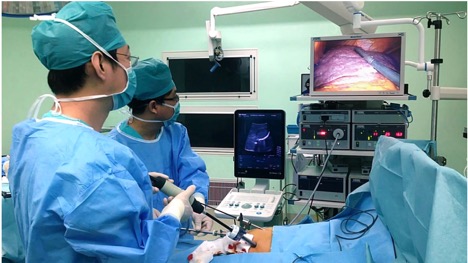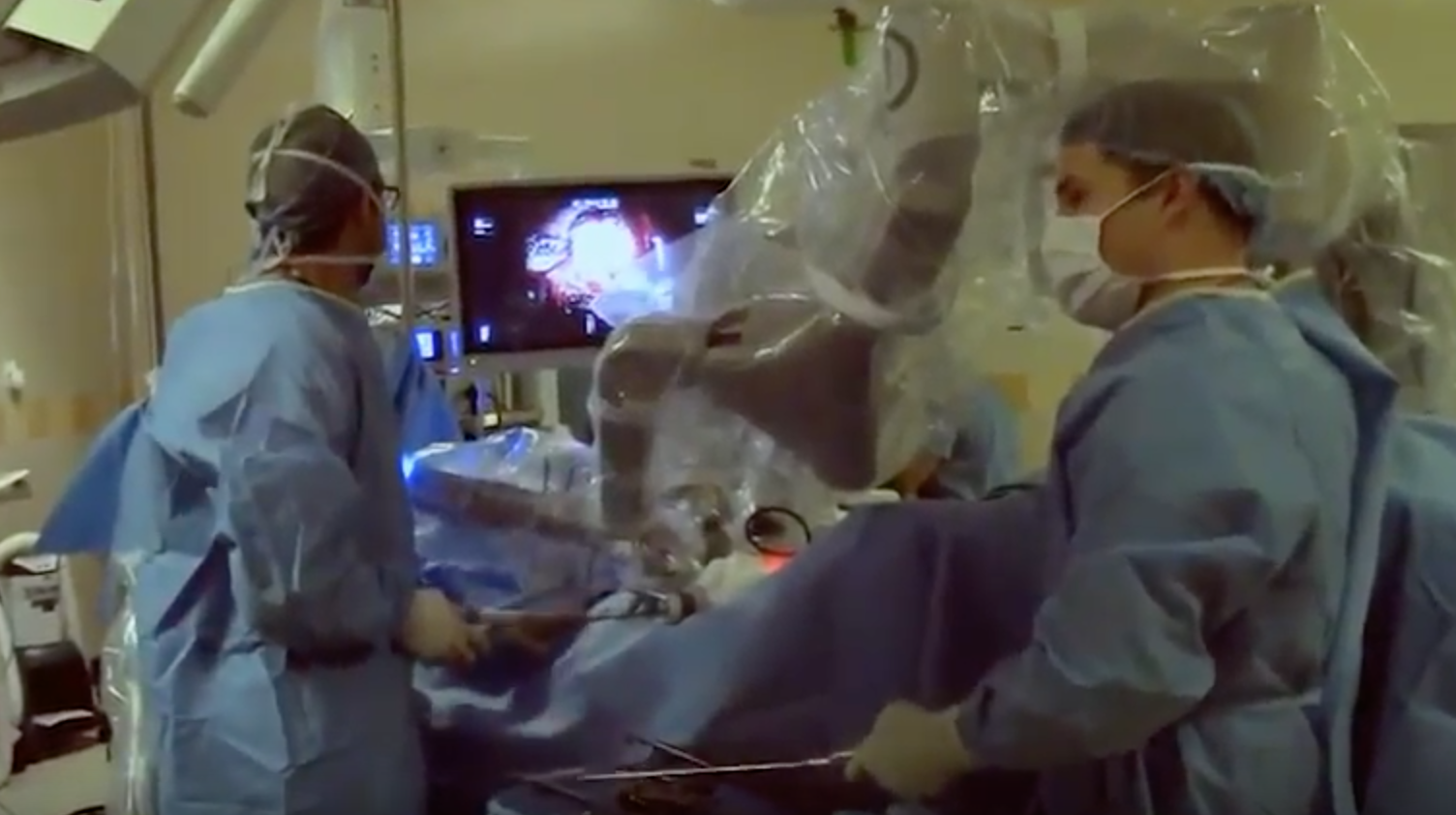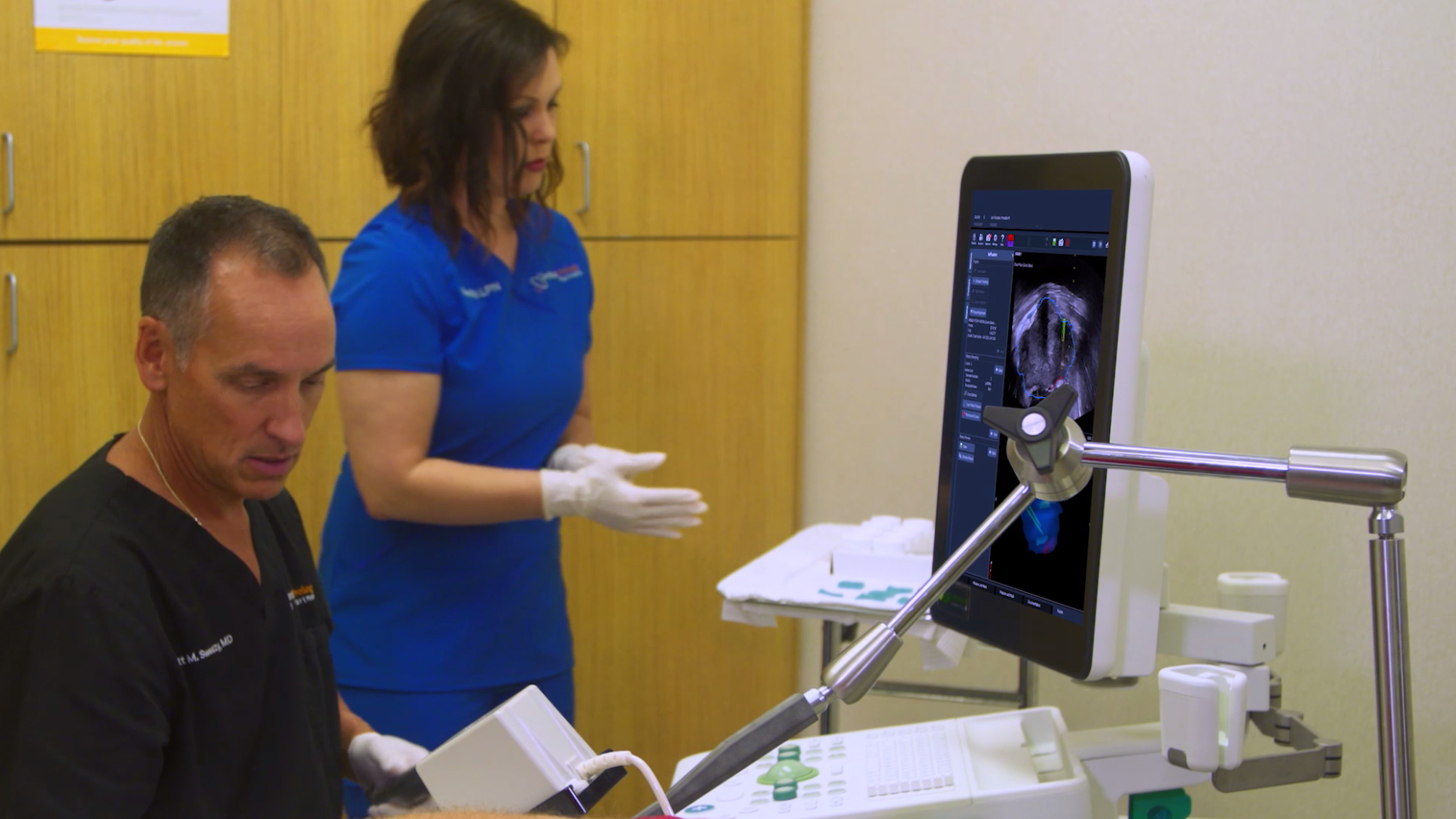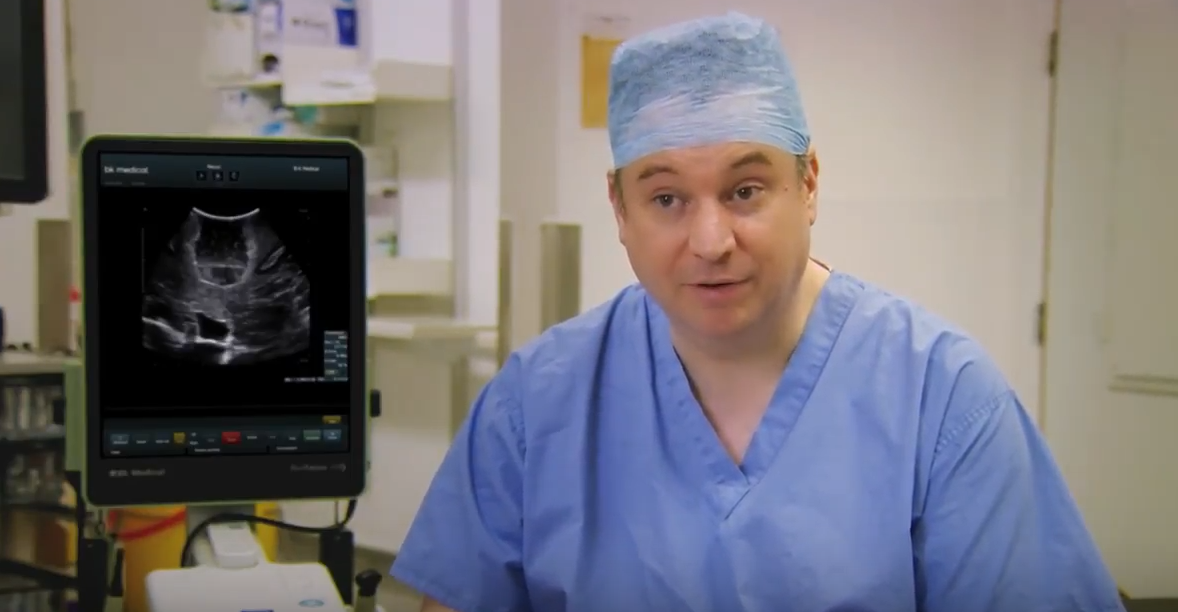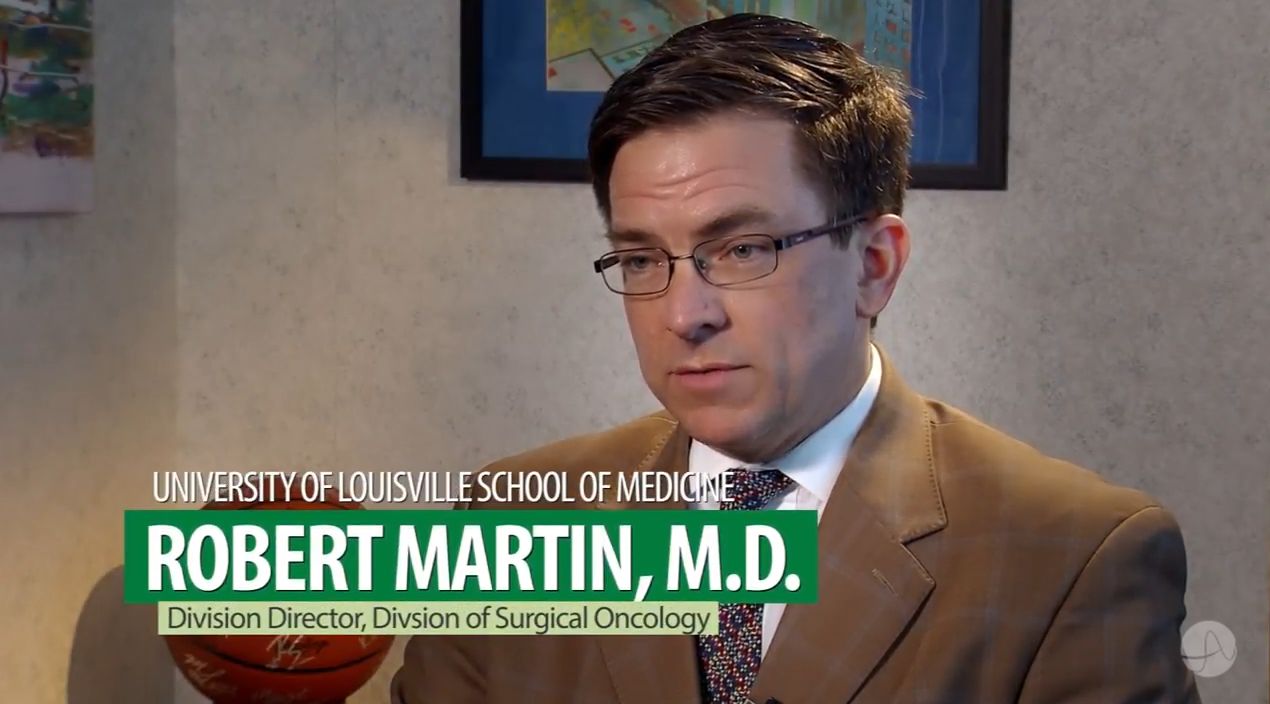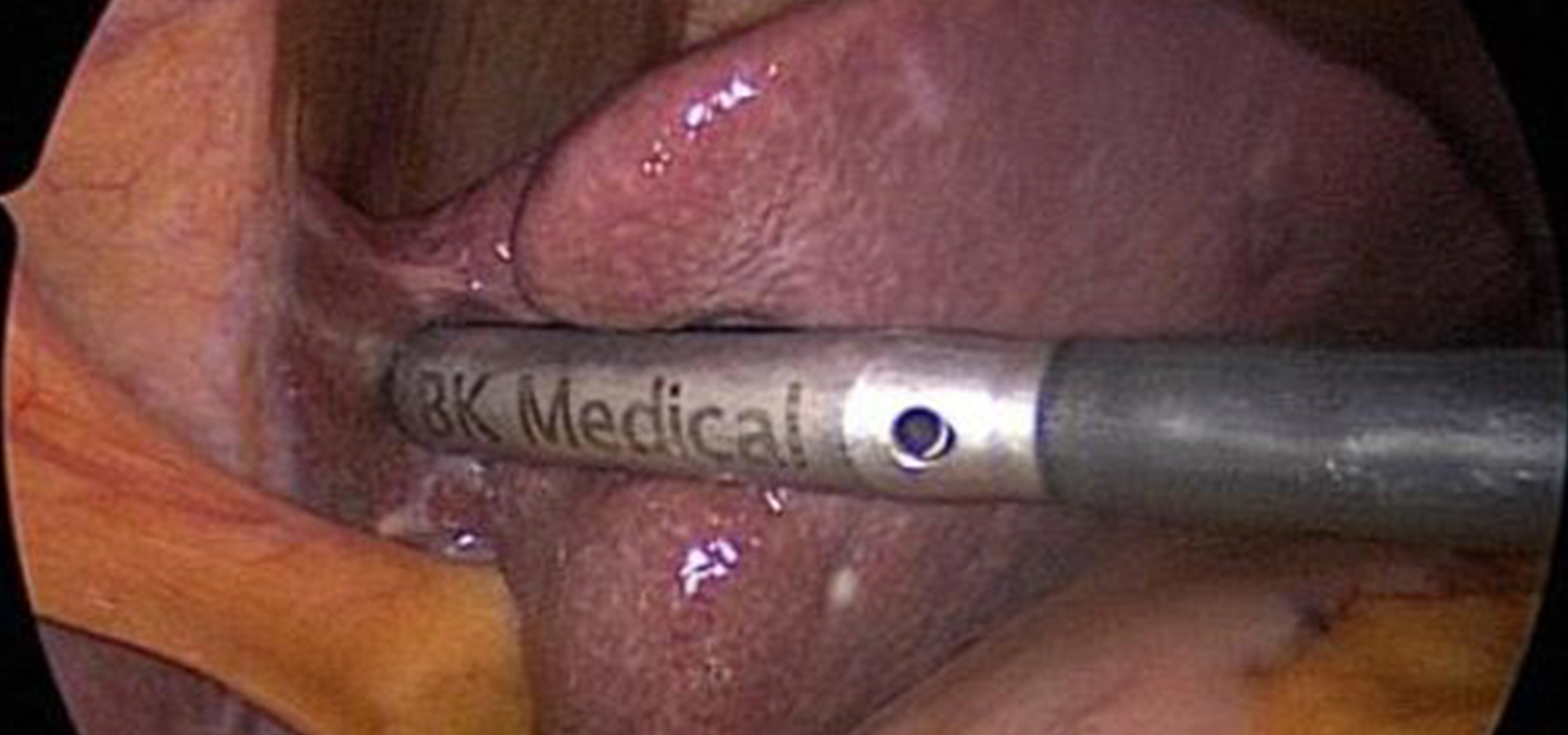In this video, Dr. Wang Hongguang, hepatobiliary surgeon at PLA General Hospital, Beijing, China talks about laparoscopic ultrasound and why it is useful for ablation procedures. Specifically, Dr. Wang Hongguang discusses:
Dr. Wang Hongguang discusses why laparoscopic ultrasound is useful for ablation procedures
Topics: Intraoperative Ultrasound, Hepatobiliary and General Surgery, Laparoscopic Surgery, Tumor Ablation
Prostate Ultrasound Biopsy with BK Fusion Technology: Mr. Allen Wynn
In this video, Prostate cancer survivor Allen Wynn describes how he feels that having a doctor who uses cutting edge technology made a difference to him when he was diagnosed with a prostate cancer that required treatment. PSA tests and Digital Rectal Exams are important tools for prostate screening but often raise as many questions as they answer. Systematic biopsies don’t always give enough information to be conclusive. Fusing real-time ultrasound images with pre-exam MRI data gives you better guidance to help accurately target lesions identified in the MRI images, potentially reducing the risk of missing high-grade tumors or under-staging tumors for active surveillance. Watch this video to learn more about the bkFusion system.
Topics: Urology, MR Fusion Biopsy, Prostate Biopsy, bkFusion
The Benefits of Predictive Fusion for MRI Fusion Prostate Biopsies
Predictive Fusion™ is the new technology in bkFusion for prostate MRI Fusion biopsies.
BK Ultrasound has partnered with MIM Software to bring advanced fusion software to urologists. Predictive Fusion™ saves time and reduces your procedure steps by eliminating the need to draw ultrasound prostate contours. Watch this video for an introduction to Predictive Fusion™.
Topics: Urology, MR Fusion Biopsy, Prostate Biopsy, bkFusion, Predictive Fusion
Why Intraoperative Ultrasound is Useful for Robotic-Assisted Myomectomy Procedures
In this video, Dr. David Carnovale, Medical Director for Fertility Specialty Care at Community Health Network in Indianapolis, USA talks about intraoperative ultrasound and why it is useful for robotic-assisted myomectomy procedures. Real-time intraoperative ultrasound helps Dr. Carnovale to:
Topics: Surgery, Robotic-Assisted Surgery, Intraoperative Ultrasound, Myomectomy
Using the bkFusion Ultrasound System for Guiding Prostate Biopsies: Jim Brazell
In this video, US army veteran Jim Brazell describes how bkFusion technology helped his physician manage his prostate cancer disease process. bkFusion is the seamless integration of the bk3000 and bk5000 ultrasound systems with the best visualization and guidance software available. Watch this video with Jim Brazell to learn more about bkFusion from a patient’s perspective.
Topics: Urology, MR Fusion Biopsy, Prostate Biopsy, bkFusion, bk5000
The Benefits of Real-Time Intraoperative Ultrasound for Neurosurgery
In this video, Dr. Gavin Quigley, Consultant Neurosurgeon at a large teaching hospital in Belfast, UK, talks about real-time intraoperative ultrasound for neurosurgical imaging and how he uses it in his daily practice. Real-time intraoperative ultrasound imaging helps Dr. Gavin Quigley to:
Topics: Surgery, Intraoperative Ultrasound, Neurosurgery and Spine, Brain Shift, Tumor Resection
Using the bkFusion Ultrasound System for Guiding Prostate Biopsies: Dr. Scott Sweazy
In this video, Dr. Sweazy of Carolina Urology Partners discusses the benefits of incorporating bkFusion technology from BK Ultrasound into his urology practice. Because prostate cancer is the most common occurring malignancy among men in the United States and the number two cause of cancer deaths among men in the United States, Dr. Sweazy wants to diagnose his patients early on. He finds the real-time ultrasound imaging pared with the pre-exam MRI data helpful in improving his patients’ care. Watch this video with Dr. Sweazy to learn more about the bkFusion system.
Topics: Urology, MR Fusion Biopsy, Prostate Biopsy, bkFusion
Use of Intraoperative Ultrasound for Surgical Oncology
In this video, Dr. Robert Martin, Division Director of Surgical Oncology at the University of Louisville School of Medicine, talks about intraoperative ultrasound and how he uses it in his practice for patients with upper gastrointestinal malignancies. Specifically, Dr. Martin discusses:
Topics: Surgery
Use of Ultrasound During Two Stage Laparoscopic Liver Resection
Learn more about how intraoperative ultrasound can influence operative strategy in two-stage liver resections through:
- mapping hepatic vasculature with regards to tumors
- defining margins of resection
- enabling parenchymal-preserving resection
Mathieu D'Hondt, MD
Dept. of Digestive and Hepatobiliary and Pancreatic Surgery, AZ Groeninge Hospital, Kortrijk, Belgium
Liver resection remains the only potentially curative treatment providing long-term survival for patients with extensive bilobar colorectal liver metastases.
A two-stage hepatectomy is a potentially curative strategy that consists of:
• A first-stage procedure, where colorectal liver metastases in one hemiliver are resected. The primary colorectal tumor is often resected by combining a partial colectomy with the first-stage liver resection.
• A second-stage procedure, where all colorectal liver metastases in the contralateral hemiliver are resected.
Topics: Surgery
Use of Ultrasound During Complex Redo Open Liver Resection
Read about the advantages of intraoperative ultrasound in the detection of liver tumours and the planning of surgery.
Mathieu D'Hondt, MD
Dept. of Digestive and Hepatobiliary and Pancreatic Surgery, AZ Groeninge Hospital, Kortrijk, Belgium
Liver resection is the standard treatment for colorectal liver metastases and has a five-year overall survival rate estimated to be as high as 58%1. However, up to 75% of patients undergoing liver resection for colorectal liver metastases will develop intrahepatic recurrence2. The modern treatment of colorectal liver metastases is based on a multidisclipinary approach. From a surgical point of view, the management of colorectal liver metastases has significantly changed over recent years.
Topics: Surgery

